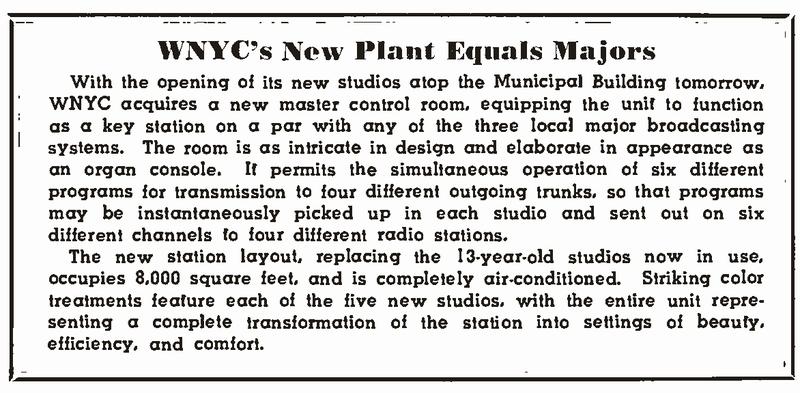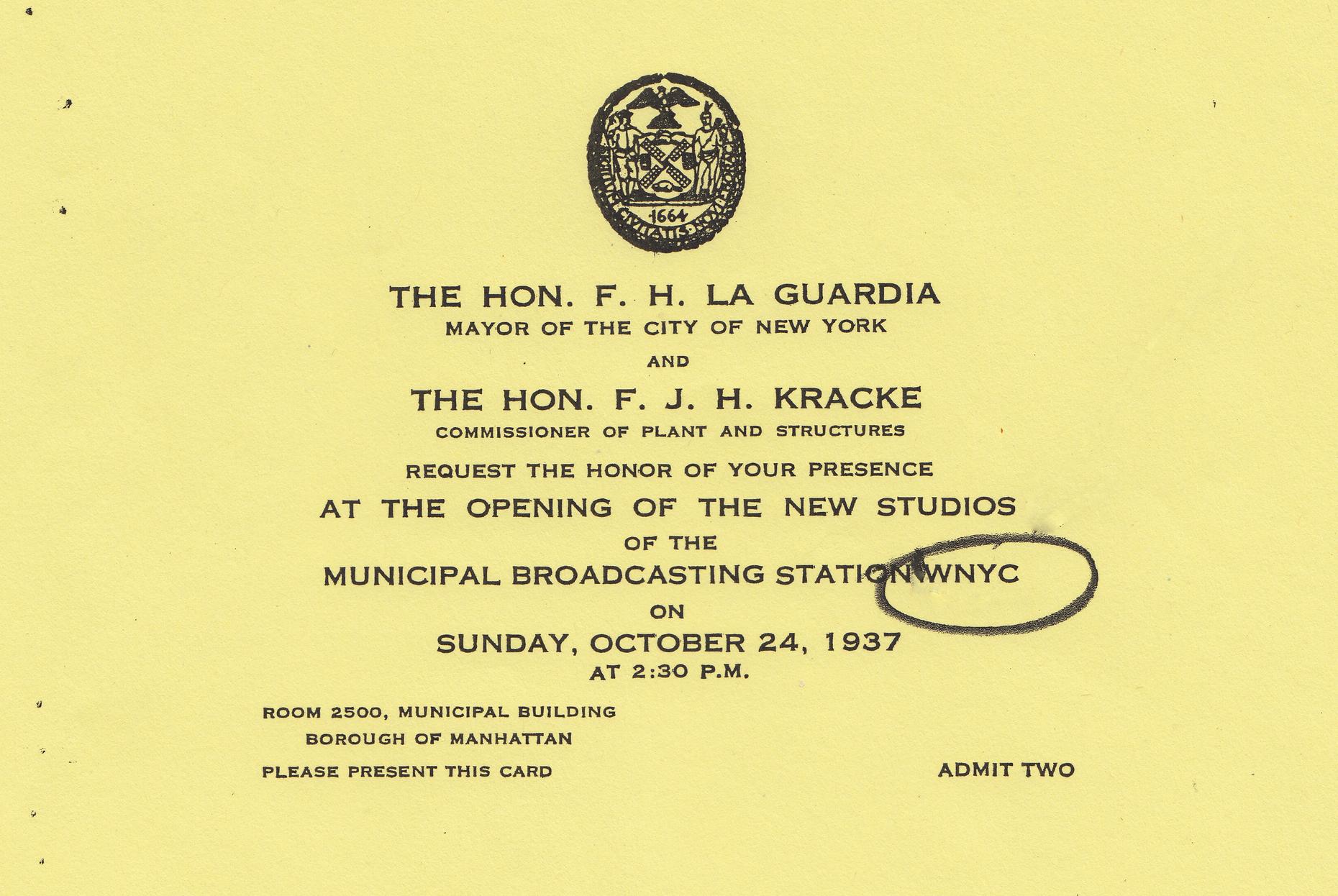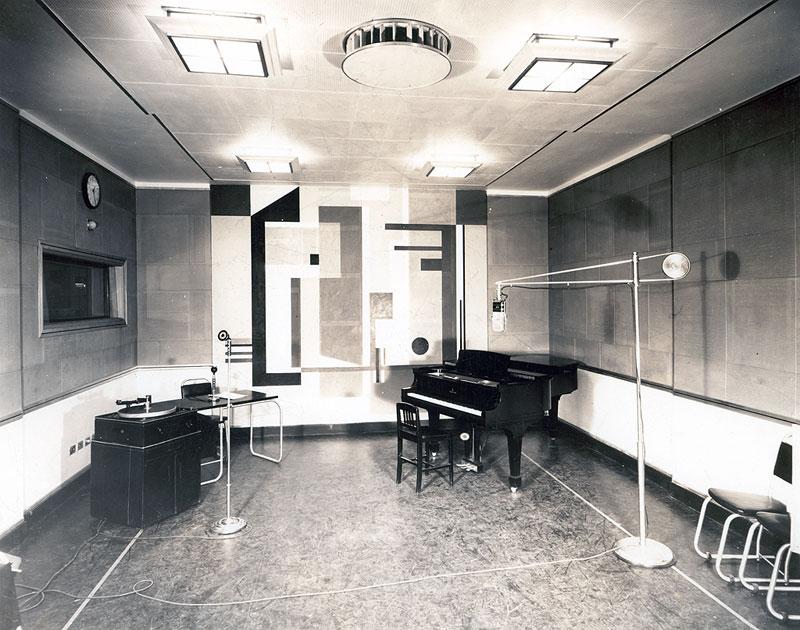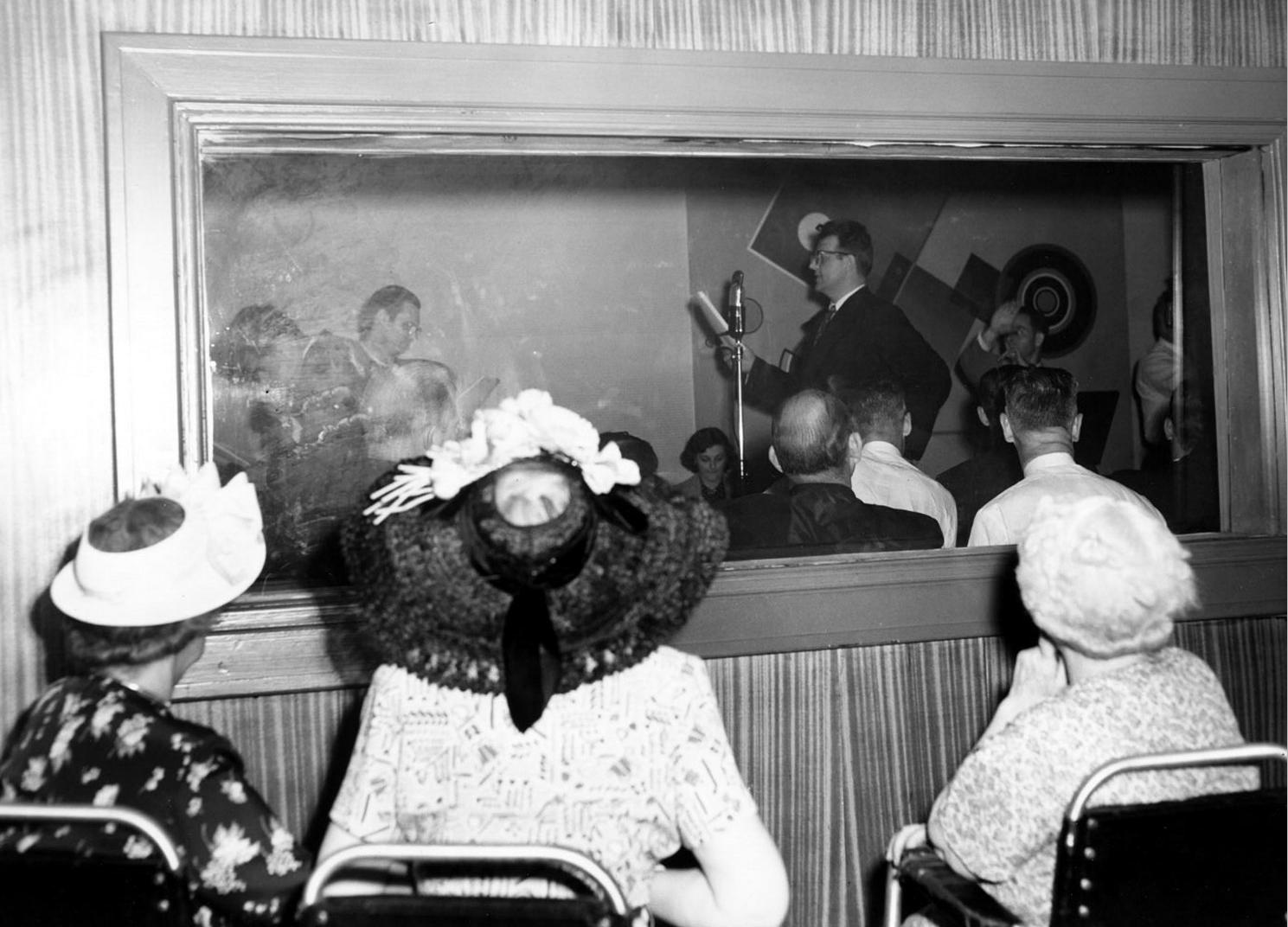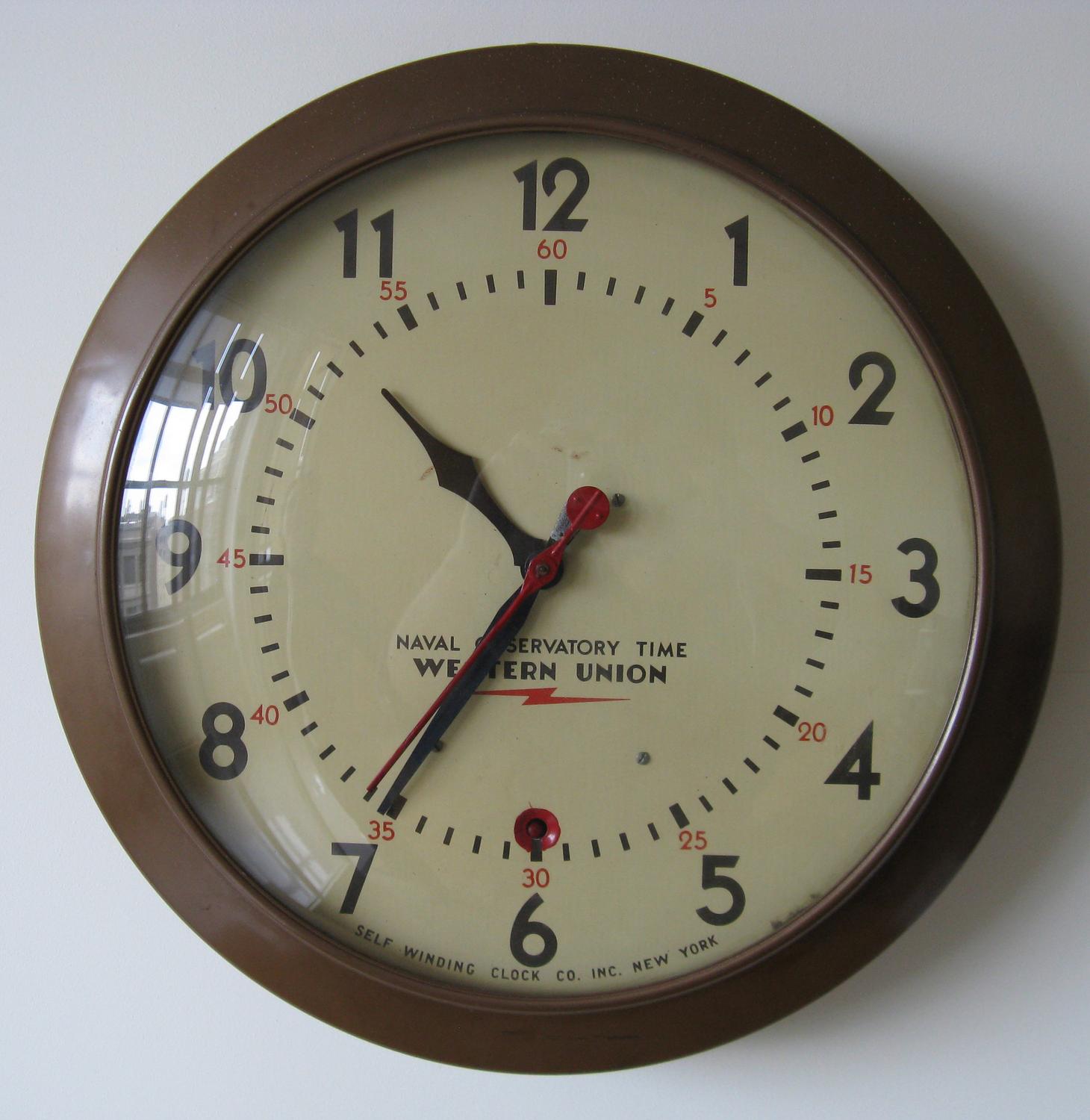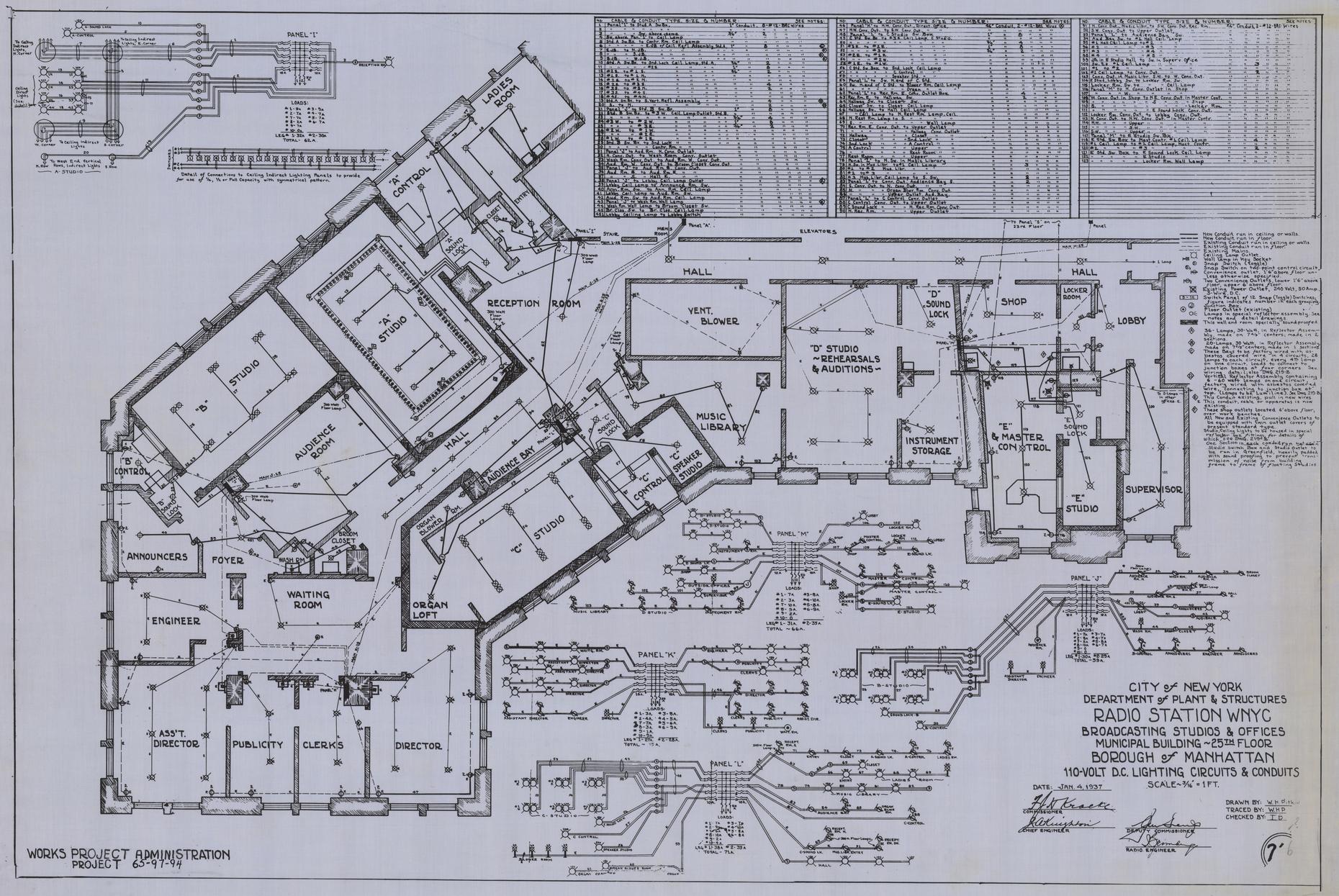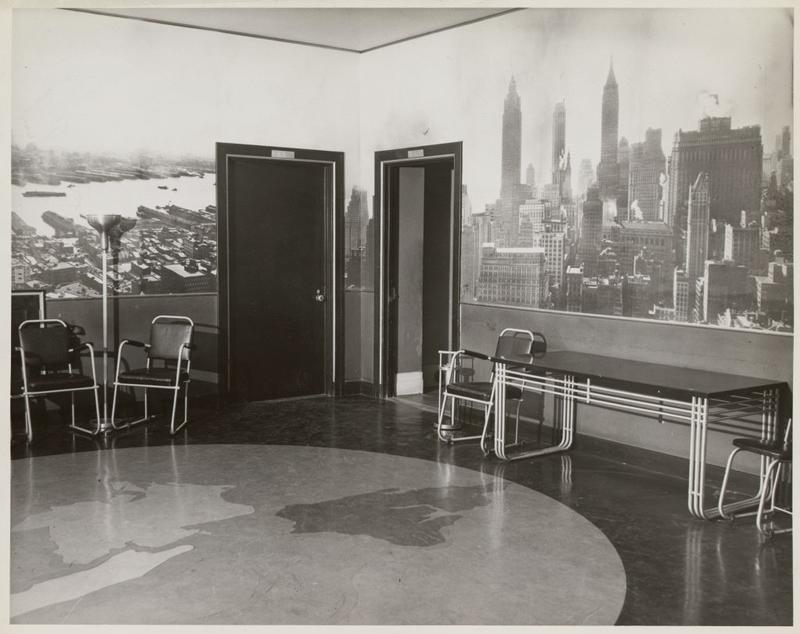
WNYC celebrated the inauguration of its suite of new studios in the Municipal Building with a five-hour broadcast featuring the play WNYC: The Voice of the People, with Mayor La Guardia playing himself in the production.
MUSIC: 20 sec, UP AND OUT
ANNOUNCER: The voice of the people! Station WNYC!
Voice of New York City’s people – almost eight million of them!
This voice speaks only FOR its people. It sells nothing. It advertises nothing.
It speaks but to inform, to educate and to entertain. In this special program we tell you some of the outstanding achievements of New York City’s own station, WNYC.*
The radio play was a series of vignettes in which WNYC effectively comes to the rescue: among them, helping the police find missing persons, aiding the Health Department unmask a charlatan, and saving a baby's life with an emergency call for a rare blood donor.
The event's musical performances were given by the Greenwich Orchestra, Robert Weede, baritone; Luella Mileus, soprano; Armand Tokatyan, tenor; Cyrena Van Gordon, contralto; Jacques Gordon, violinist; Frieda Hempel, soprano; the Federal Symphony Orchestra; the State Symphonic Band with Giuseppe Creatore conducting; and the WPA Civic Symphony Orchestra. The studio opening was also a reunion for veterans of the station's first broadcast July 8, 1924 and included Vaughn De Leath, Billy Jones and Ernest Hare, Vincent Lopez and others.
The following description of the station's new studios is taken from unpublished materials written by the New York City WPA Writers' Project and come to us courtesy of the NYC Municipal Archives.
When these studios were enlarged and completely reconstructed in 1936-1937, the most modern sound-proofing methods and materials were used to make them models of simplicity, neatness, and efficiency. The walls and ceilings are covered with panels formed of a mixture of mica and mortar compressed to flint-like hardness and perforated with small holes. These strain noise. Behind these panels is rock-wool padding two inches thick which further absorbs any stray echoes or other disturbing acoustical overtones. Unlike the old studio where sounds played into a microphone reverberated back and forth across the studio, programs now go where they're aimed.
The six studios vary in size so as to be readily adaptable to the various types of programs broadcast. Studio A, the largest, is twenty by forty feet in size and is used principally for broadcasts by concert and symphony orchestras. Studio C, next in size with an area of 827 square feet, is used for musical and large dramatic productions. Then comes Studio B with an area of 544 square feet; Studio D with 522; Studio E with 126; and Studio F with 96 square feet. Studio E is used exclusively for broadcasting recorded programs, while Studio F is used for sound effects for programs played in Studio C, and for single speakers --particularly those who are nervous or self-conscious under the gaze of an audience. Floors are covered with heavy battleship linoleum inlaid with attractive designs. Lighting is indirect, and all studios are air-conditioned.
Decorative motif is gay blues, warm browns, and soft grays, with trim of silver and ebony. In some of the studios and corridors there are several murals by Stuart Davis, Byron Browne, Louis Schanker, and A.G. Lorimer, artists who did the work under the direction of the Federal Art Projects of the Works Progress Administration.
The central foyer, from which the studios and corridors radiate, is pentagonal in shape, with its five walls covered by an enormous panoramic photograph of the skyline of New York City taken from the tower of the Municipal Building. A circular map of the city graces the center of the floor with each of the five boroughs outlined in linoleum of a different color.
Corridors leading to the executive and other offices are beautifully paneled with walnut and mahogany. The spacious audience chamber which serves both Studio A and Studio B is paneled with walnut. The larger studios are all equipped with Steinway grand pianos, and in addition, Studio A has an upright piano and a harpsichord of foreign manufacture.
Each office has a loudspeaker tuned to the station, and all programs broadcast can be heard by the workers as they perform their daily duties. The importance of split-second timing in running a broadcasting studio is impressed on both personnel and visitors alike by the numerous electric clocks, which confront them at almost every turn.
Foremost of the scant half-dozen municipally-owned radio broadcasting stations in the United States, WNYC is the only such station that does not sell time over its facilities, but devotes itself exclusively to serving the people of the City of New York.
_______________
The new facilities were also furnished with Warren McArthur 'machine-age' art deco chairs and tables. A week later WNYC's new transmitter site in Greenpoint, Brooklyn would open.
___________________________
*Script only in the collection, but unfortunately, no recording.

